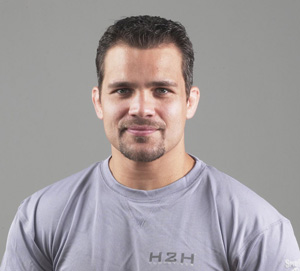
The INNOVATORS : FIVE PEOPLE WHO ARE CHANGING THE FACT OF MARTIAL ARTS
Too often martial arts and combat sports are viewed as unchanging monoliths that long ago reached a state of perfection. Most practitioners never bother to question this wisdom and spend their entire careers simply repeating whatever it was their teachers or coaches showed them. But historically there have always been a handful of martial artists who go against the grain, those who won’t just do what they’re told and who have the insight to come up with something new… something better.
From Jigoro Kano to Bruce Lee, fighting has always had innovators who pushed the boundaries of martial arts and dragged the rest of us forward inch by inch into the future. Here are five people who continue to innovate and change the way we currently practice and view martial arts:
Ancient Japanese fighting systems, or koryu, are frequently viewed as the most conservative form of martial arts, outright rejecting innovation in favor of a strict adherence to traditional methods. So it may be surprising to find one of the martial arts world’s most innovative thinkers coming from a background based largely in koryu systems. But martial artist, writer and clinical therapist Ellis Amdur is an iconoclast redefining many aspects of the martial arts.
Originally starting out in aikido and having trained with some of the best aikidoka in Japan, Amdur’s book, Dueling with O’Sensei, broke new ground in historical research into both aikido and it’s founder, Morihei Ueshiba. While in Japan, Amdur also became interested in koryu arts, eventually earning a teaching license in Araki-ryu, an old battlefield system that specialized in fighting with weapons at close quarters. Araki-ryu is actually one of the few koryu that encourages a certain amount of change and innovation within its structure. Having studied judo, muay thai and Brazilian jiu-jitsu, Amdur has shown a willingness to modify some of his style’s methods making them, he feels, more practical and stronger. Others in the martial arts community, from law enforcement to mixed martial arts, have taken notice and sought out Amdur for his unique insights.
But perhaps his most important contributions have come in dealing with the psychological aspects of violence. A therapist specializing in crisis intervention who frequently deals with violent and unstable individuals, Amdur has written a number of books on various aspects of de-escalating hostile situations which are becoming standard reading in the law enforcement community, among prison officials, with those who work in the mental health field and elsewhere.
John Danaher
A black belt in Brazilian jiu-jitsu and long-time instructor at the Renzo Gracie Academy in New York, John Danaher is changing the technical face of the no-gi grappling world. A one-time Ivy League philosophy student who gave up working on his PhD at Columbia University to do jiu-jitsu full-time, Danaher brought one of the sharpest, most well-trained minds martial arts has to the game of grappling and has started a mini-revolution in the jiu-jitsu world.
Some years ago he began experimenting with leg locks, once frowned upon by many traditional Brazilian jiu-jitsu practitioners, looking for ways to make them more systematic in their application. What he came up with was an entire jiu-jitsu subsystem that allowed the grappler to maintain control of an opponent while methodically working their way into a leg lock. His methods have proven so successful, the leg lock game is now standard fare among most high level grapplers. But few do it as well as the elite grapplers, like Gary Tonon and Gordon Ryan, who train under Danaher forming what has become known in jiu-jitsu circles as “the Danaher Death Squad.” His influence has even carried over into the world of mixed martial arts where he numbers among his students UFC superstar Georges St. Pierre.
While Danaher’s disciples have had success in the standard no-gi grappling events – Ryan won his weight division at the 2017 Abu Dhabi World Submission Wrestling Championship – he and his team seem to prefer the growing realm of submission only competitions. They’ve dominated at events like the prestigious Eddie Bravo Invitational tournaments and have even participated in several unique no time limit matches continuing to push the boundaries of how we look at, train and compete in grappling.
Craig Douglas
Some years ago, in the early days of internet martial arts discussion forums, an individual posting under the name “Southnarc” began to make himself known when he started commenting on the nature of life and death close quarter combat. His insights into various aspects of real fighting, particularly involving bladed weapons, were so lucid and insightful bespeaking of authentic real world experience, that others couldn’t help but sit up and take notice.
As it turned out “Southnarc” was Craig Douglas, a former undercover narcotics officer just as his screen name suggested. A longtime martial artist, Douglas’s views on how to fight in the street had undergone a metamorphosis after several harrowing, life and death encounters on the job. He began retooling his methods of both employing and defending against weapons at close quarters, incorporating a greater degree of grappling and groundfighting, things that have often been lacking in many traditional weapons systems.
Forming a company “Shivworks” and calling on a network of like-minded individuals in law enforcement, Douglas’s ideas on close combat have begun to spread among many in the police community. Various law enforcement agencies across the country have gradually begun to seek him out, turning to Douglas for answers on what to do when a situation goes sideways and officers are forced to fight for their lives at close quarters.
Anatoly Lomachenko
Boxing has as long a professional history as almost any sport in the world, dating back to the old bareknuckle days in 18th century England. As a fighting science, it presumably reached its apex decades ago with nothing new left to add. But Anatoly Lomachenko may be making everyone reconsider that assessment. His son, Vasyl, is considered pound for pound the best fighter in the sport, apparently thanks in large part to the unconventional training methods his father has used on him literally since Vasyl was old enough to walk.
Lomachenko employs everything from juggling to handstands in order to develop a superior sense of coordination and body awareness in his son. He places computer chips in his hand wraps to analyze information on every single punch in sparring sessions and employs a full time sports psychologist to fine tune Vasyl’s mental state. Starting when Vasyl was ten, the elder Lomachenko made him take two hours of dance lessons every day to improve his footwork. And it’s not just with his son these methods have found success.
A native of the Ukraine, Lomachenko coached the Ukrainian national boxing team and, after instituting his unique training regime, led them to unprecedented success in the Olympics earning two gold medals and a bronze at the 2012 games. The three medalists, including Vasyl, Oleksandr Usyk and Oleksandr Gvozdyk , soon turned professional and have since all won world championships.
As Govozdyk told the Los Angeles Times, “(Vasyl) Lomachenko’s father made this team. He created it… He’s a psychologist, a leader. He says something and you believe in it. Because everything he tells you, it works.”
Greg Thompson
In the realm of modern military close quarter battle, there may be no one more influential than Greg Thompson. The long-time civilian trainer for the United States Army Special Forces, his Special Operations Combatives Program, or SOCP, has proven so influential it’s made it’s way into the training regimens of such elite organizations as the FBI’s Hostage Rescue Team and the Federal Air Marshal Service.
Thompson started in martial arts with taekwondo but he took up Brazilian jiu-jitsu more than 25 years ago, training directly under Royce Gracie and becoming one of his first black belt students. He eventually began teaching special forces soldiers stationed near his home in North Carolina, soon earning a contract to design and implement a close quarter battle program for one of the military’s most elite combat units. But Thompson went beyond his training in BJJ seeking out some of the world’s best martial arts instructors in everything from MMA to kali in order to flesh out what he was teaching.
Holding a degree in industrial design, Thompson approaches martial arts with a more technically objective eye than most. He’s willing to instantly jettison any techniques that don’t prove effective in combat. He also doesn’t assume he knows everything by dint of his prior experience. When asked by the air marshals to design a hand-to-hand combat program specifically for law enforcement officers stationed on airplanes, Thompson recognized he had no idea what the technical limitations of fighting in an aircraft were. So he and some of his students got private access to a grounded commercial airliner and spent a weekend running through combat scenarios in the tight quarters of a passenger cabin to figure out what would really work.
Thompson bases much of what he does on the feedback of soldiers who’ve actually employed his methods in combat. From their experiences, he’s developed his most important insights, particularly on how serious close quarter combat incidents will most often degenerate into a struggle over a weapon. Though he doesn’t necessarily teach soldiers Brazilian jiu-jitsu, or even groundfighting per se, he does employ many BJJ principals in training people to gravitate to positions of leverage in such struggles so they can more easily draw their weapon while preventing an opponent from drawing his own weapon.
Though Thompson’s teachings are primarily confined to the military and some law enforcement agencies, his ideas, as with the ideas of the other people mentioned here, may have far reaching effects on how we all practice martial arts in the future.
Source: https://maworldreport.com/index.php/2019/07/15/the-innovators-five-people-who-are-changing-the-face-of-martial-arts/
This News & Events entry was posted on July 18th, 2019.


